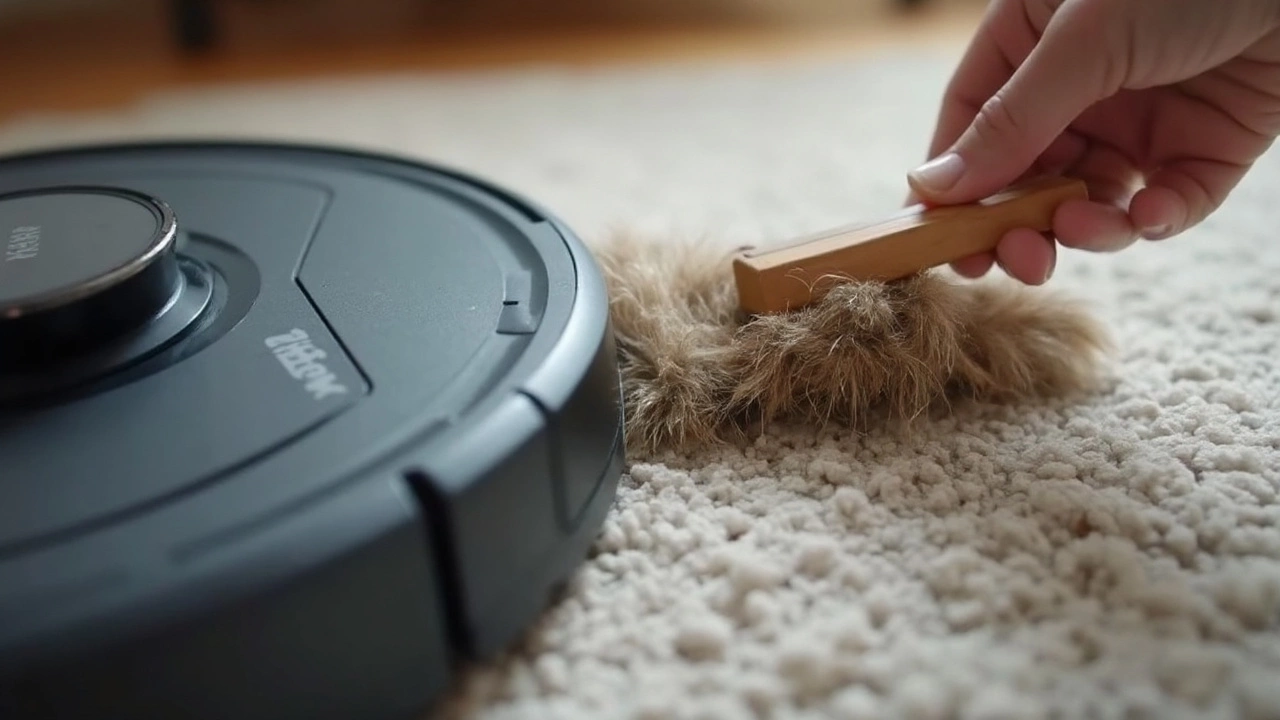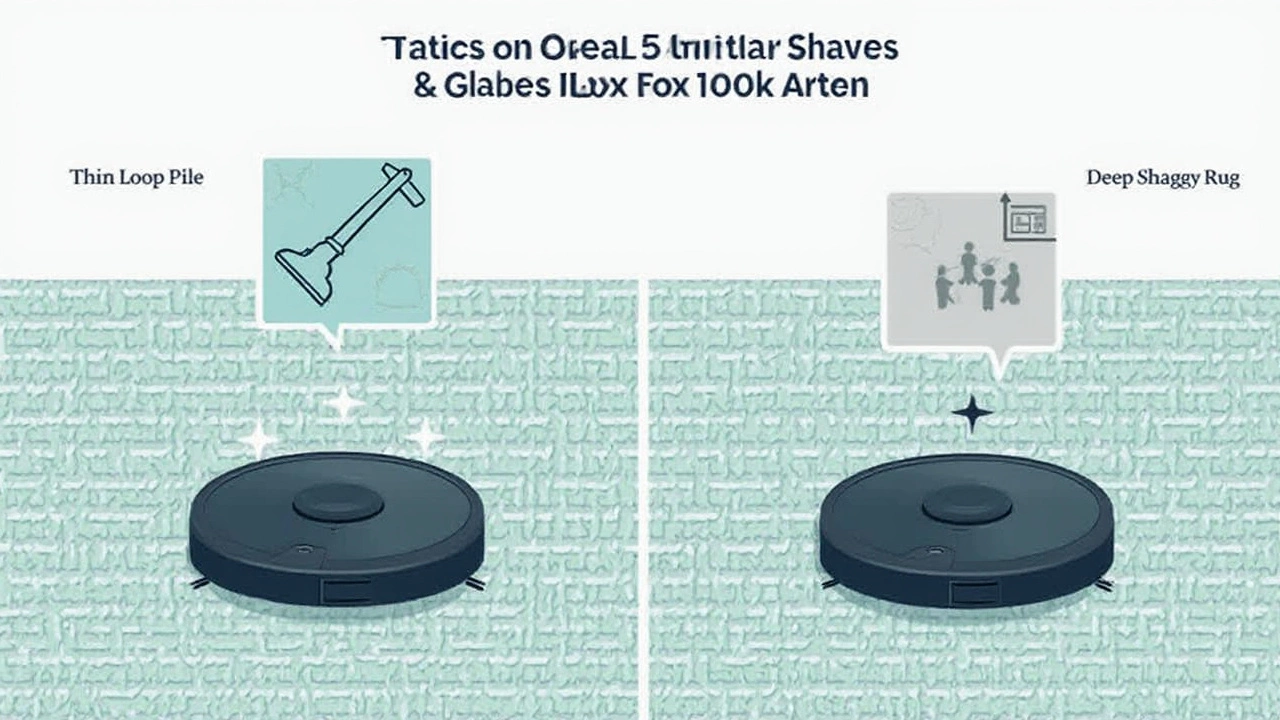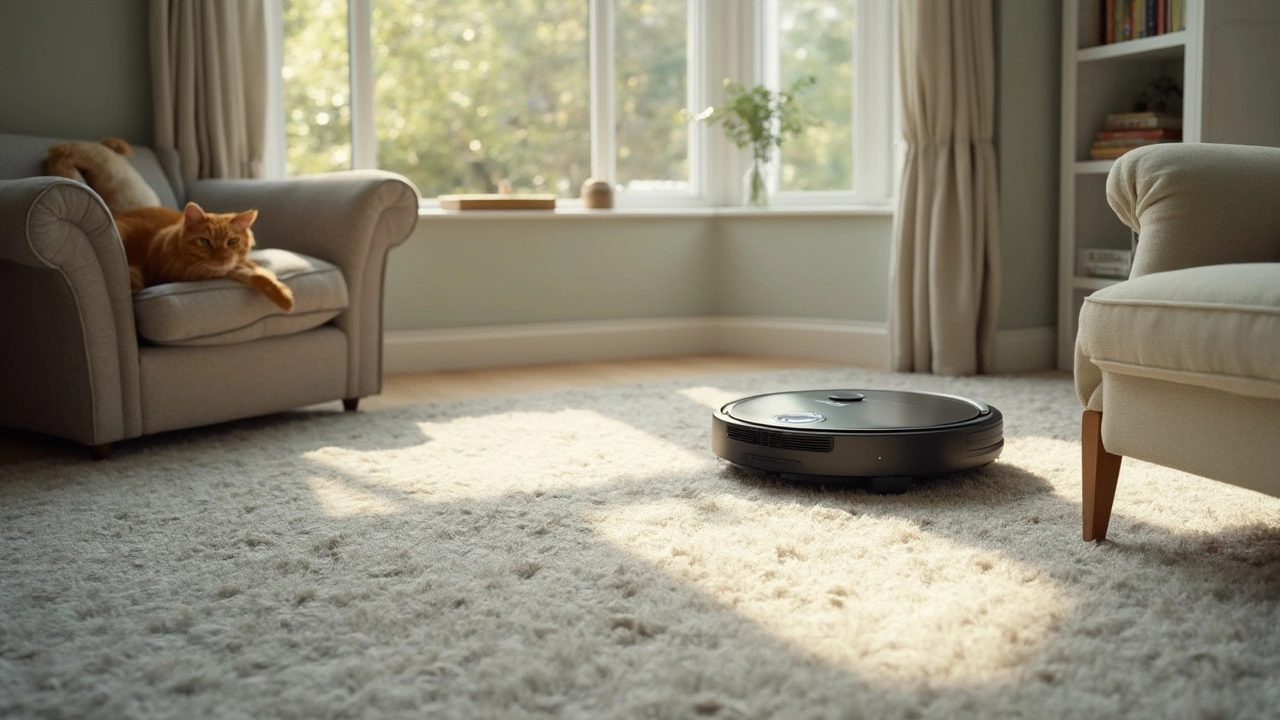Ever watch your cart-load of crumbs disappear after just a few zips from a vacuum? With carpets, things get tricky—especially for robot vacuums. Shark robots have a rep for being decent, but do they actually get the job done on carpet, or are you better off sticking with an old-school upright?
Let’s get real: Not all carpets are created equal. High-pile, low-pile, plush, looped—each one needs different cleaning muscle. Some robot vacs barely make a dent in deeper fibers. So, people want to know—will a Shark robot really dig up that hidden grit, or just take a joyride around your living room?
This isn’t just about surface-level dust. Think pet hair woven deep, spilled popcorn, or that gritty mystery stuff your kid tracked in. You want a robot that doesn’t just show off spinning brushes but can actually handle what your feet can’t see. Let’s figure out how Shark stacks up before you click “Add to Cart.”
- How Shark Robot Vacuums Handle Carpet
- What Kinds of Carpet Can Shark Robots Clean?
- Real User Reviews: Carpet Struggles and Surprises
- Boosting Carpet Performance: Tips and Tricks
- Should You Pick a Shark or Switch Brands?
How Shark Robot Vacuums Handle Carpet
If you’re thinking about grabbing a Shark robot for your carpet, here’s what you really need to know. Shark robots aren’t just copying Roombas—they’ve got some tricks that actually help on carpeted floors, especially if you deal with pet fur, dust, or all the junk that gets ground in over time.
The first thing folks notice is the self-cleaning brush roll. It’s pretty solid for picking up hair and long fibers without jamming. This is a lifesaver if your home’s a fur magnet. Also, newer Shark robots, like the Shark AI and Shark IQ series, are packing better suction power and sensors, so they can move over rugs and low to medium pile smoothly, and not just get stuck on the edge or tangled.
But don’t expect miracles on thick carpets. While their brush rolls agitate dirt, the suction drops off with deep or shaggy pile rugs. That’s just a robot vacuum thing—uprights still win there.
A few models (mainly the high-end) will auto-boost their power when they sense carpet, but cheaper Shark robots run at the same strength all the time, so keep that in mind if your house looks like a carpet showroom. Here’s a quick look at how Shark stacks up on the basics for carpet cleaning:
| Feature | Shark Mid-range | Shark High-End |
|---|---|---|
| Suction Power (Pa) | ~1000-1200 | ~2000-2200 |
| Auto Carpet Boost | No | Yes |
| Brush Type | Standard Self-Cleaning | Enhanced Multi-Surface |
| Navigation on Carpet | Basic Sensors | Precision LIDAR/AI mapping |
Here’s the big takeaway: If your home is mostly low or medium pile carpets, a Shark robot can keep up pretty well. For high pile or plush rugs, you’ll probably need to run it more often or do a quick upright pass now and then.
By the way, Shark’s bin capacity is usually a bit bigger than some rivals, so you won’t have to empty it every day—nice if you’ve got a busy house. But don’t skip on basic care—check those brush rolls and sensors, especially if you notice cleaning power dropping.
The Shark robot is a decent bet for everyday carpet cleaning, as long as you keep your expectations realistic and choose the right model for your carpet type.
What Kinds of Carpet Can Shark Robots Clean?
There's a huge difference between what Shark robot vacuums can handle and what makes them struggle. If you've got low-pile or medium-pile carpet, you're in luck. Most Shark robot vacuums (like the Shark IQ and Shark AI) do a solid job on this type because the pile isn’t too thick for the brush roll and suction to reach dirt and crumbs. On tight, flat carpets—think those old-school office-style rugs—they pick up dust, cereal, and hair pretty easily.
When it comes to high-pile or shaggy carpets, things change fast. Here’s the truth: Shark robots can run on them, but they’re not champs. They might grab what's on top, but deep down, their suction is usually not strong enough to yank out everything. The brushes can get tangled too, especially on extra fluffy or long-fiber rugs. Want to see how that looks side by side?
| Carpet Type | Performance | Notes |
|---|---|---|
| Low-Pile | Very Good | Effortless movement and reliable pickup |
| Medium-Pile | Good | Cleans well, might miss deeper debris |
| High-Pile/Shag | Fair to Poor | Can get stuck, miss dirt below the surface |
| Looped/Patterned | Good | Handles most, watch for brush tangles on thick loops |
Homes with pets or kids might need more power on plusher carpets—especially if dog hair gets mashed into the fibers. The Shark robot line does best when the pile sits under a half-inch. If your whole living room is covered with thick, soft carpets, you’ll see Shark robots clean trails, but not every last bit. It’s not all or nothing though—just expect some touch-up work with a handheld vacuum now and then.
One handy tip: Try a model with "Carpet Boost" or adaptive suction if you have mixed flooring. These features push more power when the vacuum detects it’s rolling over carpet, so your machine won't slack off. But for super-thick rugs, nothing beats old-fashioned elbow grease—at least not yet.

Real User Reviews: Carpet Struggles and Surprises
If you check out reviews for Shark robot vacuums, people are pretty vocal about how these little robots handle carpet. Some owners are happy with how it picks up pet hair from their bedroom rugs. Others aren’t shy to call out when things go sideways—like when their robot gets stuck or leaves behind a line of cracker crumbs.
Let’s break down what folks are seeing at home. The biggest surprise? Results change a lot depending on carpet type. On low-pile, Shark robots tend to do well, grabbing the usual dirt and hair without much drama. On medium-pile, most say it picks up more than expected, although it can sometimes leave the really ground-in stuff. High-pile and shag rugs? That’s where most problems pop up. There are stories about robots getting hung up, spinning in place, or even shutting down mid-job.
Here’s a quick look at what users report:
| Carpet Type | Performance | User Comments |
|---|---|---|
| Low-pile | Good to Excellent | "Gets all the dog hair.” “No issues, runs like a champ." |
| Medium-pile | Good, but misses heavy messes | "Sometimes leaves kibble." “Hair sometimes wrapped on brush.” |
| High-pile/Shag | Poor | "Gets stuck often." “Won’t finish cleaning.” |
One thing people love: Shark’s brush roll is great for loosening stuff in carpet, especially for low and medium piles. But on thick, fluffy rugs, the rollers can get clogged or tangled with hair. Folks also say that regular cleaning of brushes and filters keeps performance up—ignore that, and the robot’s suction drops fast.
Some owners have compared the Shark robot on carpet against other brands. In side-by-sides, Shark is usually slightly better than bargain vacuums, especially for pet hair, but not quite as strong as pricier models like the Roomba j7+ when it comes to cleaning thick carpets or picking up larger debris.
It boils down to matching the robot to your carpet. If you’ve got mostly flat rugs or short carpet, Shark is usually a safe bet. But if you love your plush, high-pile comfort, you may run into a few robot tantrums along the way.
Boosting Carpet Performance: Tips and Tricks
If you want your Shark robot to do more than just skim the surface, there are a few tricks you’ll want to use. First up, make sure you’re using the right settings. Many Shark robots have a “Max” or “Carpet Boost” mode. This setting ramps up suction when the robot detects carpet—just remember, it drains the battery a bit faster.
Next, stay on top of basic maintenance. Clogged filters or tangled brush rolls will kill cleaning power, especially on carpet. Every week or two, pop out the brushes and check for hair or string—that stuff gets stuck fast, especially if you’ve got pets or kids running wild.
Don’t forget about placement. Most robot vacuums do much better if you clear the floor first. Pick up socks, cables, and little toys so the robot doesn’t get stuck or miss patches. If your carpet is extra plush or shaggy, try lifting up low furniture so the robot can climb on without getting jammed.
Beyond maintenance, think about getting “carpet edges”—those small strips or ramps sold online. These help the Shark robot transition onto thicker carpets without getting tripped up. Also, consider cleaning in sections if your carpet sheds a lot. Close off rooms or put down virtual walls—this gives the robot time to work each area thoroughly before the battery needs a recharge.
One more tip: empty the dustbin often. Shark robot vacuums don’t have huge bins, and when they’re full, suction drops—fast. If you have pets or lots of dirt, check the bin every run. Keep this routine up, and you’ll notice way better results on carpet.

Should You Pick a Shark or Switch Brands?
So here’s the main question: Are Shark robot vacuums really worth it for carpets, or should you look at Roomba, Roborock, or something else? If your main concern is carpet cleaning, it boils down to features, your specific carpet type, and—of course—what you want to spend.
Some Shark models actually do pretty well, especially with low and medium carpet. They use brush roll tech that helps pull hair out of short fibers, and their suction isn’t just for show. One cool thing: a bunch of models feature “self-cleaning” brush rolls, so you’re not always untangling pet fur and human hair every week. Plus, their basic mapping and recharge-and-resume features are comfortable upgrades from dirt-cheap no-name robots.
But if you’ve got thick, plush carpets, Sharks sometimes struggle. They can leave debris behind on long rugs or get stuck trying to climb up high-pile zones. That’s when more expensive brands—like high-end Roombas or Roborock S8 Max—take the spotlight. These other brands often have stronger suction (sometimes over 4000Pa versus Shark’s usual max near 2000Pa), more intelligent mapping, and better carpet boost modes.
To make this choice a little easier, check this quick table:
| Brand / Model | Suction Power (Pa) | Self-Cleaning Brushroll | Strong on High-Pile Carpet? | Price Range (USD) |
|---|---|---|---|---|
| Shark AI Ultra | 2000 | Yes | Decent, but not best | $400 - $600 |
| Roomba j7+ | 2200 | No | Good | $600 - $900 |
| Roborock S8 MaxV Ultra | 6000 | Yes | Excellent | $900 - $1600 |
| Eufy G40+ | 2500 | No | Okay for low pile | $330 - $400 |
For bang for your buck, Shark lands in a sweet spot for medium carpets and everyday messes. If your house is all fluffy rugs or you want max power and you don’t mind a bigger price tag, other brands might be better. But if you just want Shark robot simplicity, easy hair removal, and solid cleaning for the price? Shark won’t let you down.
Quick tip: Always check if your specific Shark model can handle carpets higher than 0.6 inches—some user guides actually say to avoid dense shag, which plenty of folks miss. If you’ve got mostly hard floors with the odd area rug, you’re golden. But for a carpet-heavy home, putting a little more into a powerhouse model can save you a lot of daily headaches.

